Adanusch – [Twitter]
Episode – One Punch Man #1 and #12
The big elephant in the room with regards to sakuga is obviously One Punch Man. The expectations on director Shingo Natsume and Character Designer Chikashi Kubota and their industry bros were sky-high and while I don’t think the show held up its sakuga promise outside of Shingo Natsume’s (#1, #2, #3, #12) and Yoshiaki Kawajiri’s (#8, #9) storyboards, the first and final episodes delivered in spades. The most exciting thing about these One Punch Man episodes is ascertaining the personality of its ace animators Yoshimichi Kameda, Norifumi Kugai, Arifumi Imai and Yutaka Nakamura in the way they give their own spin to a wide variety of action animation staples: be it impact frames, blobby and sumi-e smears, wild poses, crazy cinematography, unique beam animation or downright surreal debris effects. The sustained kineticism of #1’s latter half and #12’s first one is so persuasive that for once the action isn’t just in service of a lame joke, but the thrilling craft expressive of Saitama’s own giddiness.
For what it’s worth, my favourite segment would be Saitama confronting the Giant in episode 1, animated by Gosei Oda. Oda combines the cartoony rubber-band quality of his Space Dandy work with the rough pen-brush of his Fuse cuts to express raw, frantic anger through key-frame spamming a high-drawing count (i.e. on the 1s). Since this scene also gives equal weight/screen time to Oda’s hysterical reaction faces and allows for an unusual contemplative note among the mayhem, it manages to neatly encapsulate the show’s potential as comedy, action extravaganza and meditation on might in one self-contained skit better than, well, the entire rest of the show does.
Show – Death Parade
Yuzuru Tachikawa distinguished himself with his deft, delicate handling of mostly daft material (Kill La Kill #7, Attack on Titan #7, Terror in Resonance) and this year he finally caught his big break: Madhouse allowed him to riff on his Anime Mirai 2013 short Death Billiards for a full 13 episodes in winter season.
The premise remained unchanged: Death Parade’s protagonist is purgatorial gamemaster Decim who engineers pretend-life-or-death situations through competitive games in order to morally judge his deceased patrons before sending them off to the afterlife. Writer-director Tachikawa is up to the task of expressing the melodrama with a terrific use of animated form: on the basis of Shinichi Kurita’s mature character designs and animation direction, Death Parade features 1) omnipresent smears designed to make gestures pop, 2) extreme, dramatic close-ups of eyes and gestures, 3) spectacular, overwrought character acting and 4) vertiginous CG tracking shots inhabited by the dynamic drawings of Takashi Kojima. I think this climactic scene from #1 by the hand of MVP Takashi Kojima showcases the visceral qualities of Death Parade perfectly.
But the real showstopper to me is the nuanced viscosity of Death Parade’s animated fluids: blood, sweat, tears, spit, water and alcohol drip in singular beads or fall in streams, gush like geysers or flow straightforwardly. Add to that some effective, restrained post-processing specifically in its flashbacks which feature grain, ostentatious blurring and blown-out colours and you’ve got yourself on good-looking show.
Like his protagonist, Tachikawa’s tonal control and grasp of the human psyche is a bit iffy, but also, like Decim, his showmanship is undeniably slick and entertaining– a promising debut and another feather in Takashi Kojima’s already impressive cap.
Movie – When Marnie Was There
Miyazaki protegee Hiromasu Yonebayashi doesn’t imitate his teacher’s sense of wonder nor Takahata’s process-based, episodic filmmaking, but, in turning Joan G. Robinson’s beloved children’s book “When Marnie Was There” into a beautifully morose teen-weepie set on the Japanese coastal line, Yonebayashi manages to skilfully depict protagonist Anna’s depression through tiny, revealing gestures and nuanced encounters, with the polished (sometimes bland) evenness you’d expect from a Ghibli B-film.
What he also shows is a rare gift for rendering vivid the melodramatic emotional landscape of teenage girls with a very elastic range of flashy character animation – in one particular bravura sequence the film moves from different styles to illustrate different facets of our titular heroine seamlessly: 1) in the intimacy of the delicate, slow movements Takashi Inamura draws one can sense Marnie’s emotional empathy, 2) afterwards Hiroyuki Okiura’s applies his trademark realism to Marnie’s irresistibly charismatic movements, 3) and finally, Marnie’s longstanding trauma because of her bullying maids and absent parents is expressed through Takeshi Honda’s composed acting alongside Shinji Hashimoto’s wild, fluctuating lines. These pent-up emotions gather steam and come head-to-head in the suitably apocalyptic finale by newbie Akihiko Yamashita, which equates the depth of Marnie and Anna’s well-realised emotions with the thunderous force of ocean waves. If this is to be Ghibli’s last independently produced film, it’s one heck of a way to go.
Openings and Endings
Unexpected Sakuga – Seiyu’s Life!
When I heard of Hiroshi “ahoboy” Ikehata’s (Robot Girls Z) involvement in a Studio Gonzo production about anime voice actor’s day-to-day struggle written by Michiko Yokote (Shirobako) I expected a decent comedy carried by real-life references and the occasional nice cut. What I did not expect was the constant barrage of varied comedic faces and character animation that’s giddy and downright trippy at times (presumably) by the hand of Robot Girls Z alumni Tamotsu Ogawa throughout the show.
Animator Discovery – Kai Ikarashi
The most exciting anime project of 2014 and 2015 would undoubtedly be Studio Khara’s Japan Animator Expo. It’s most notable for giving carte blanche to auteurs and star animators to create animation shorts to their own exacting standards, among my favourites of those would be Toshiyuki Inoue’s sprightly dance moves and pivoting camera within the beautiful, childlike phantasmagoria of Takashi Nakamura’s “Bubu & Bubulina” or the dynamic, rough lineart of Yoshimichi Kameda and Shinji Hashimoto in “Kanon”, in which Mahiro Maeda condenses a novel’s worth of plot and philosophical thought into a zany 7-minute stream-of-consciousness story (the novel adapted being “Adam Stvořitel” by Karel Čapek).
This doesn’t mean that some young upstarts didn’t steal the spotlight now and then. Take for example Kai Ikarashi out-Kanada-ing everyone else on “Sex & Violence with Machspeed”, which had Trigger director Hiroyuki Imaishi iterating on the stark monochrome + 1 colour aesthetic of his Panty & Stocking with Garterbelt doujins. Ikarashi’s cut kinda evokes Imaishi’s Hulk cover in its dynamic, Gorilla-esque poses and he shows a rare confidence with his unique frame timing. He has since delivered another terrific cut in OPM #6, showcasing an aptitude for interesting flat effects animation and even slipping in Kameda-esque impact frames, all while retaining his unique sense of timing and energy.
Recommendations – L’Œil du Cyclone, slight Fever, Little Witch Academia, Shirobako
My favourite animation of the year period would have to be “L’Œil du Cyclone”, by independent animator and Vimeo-darling Masanobu Hiraoka. It presents a continually fluid interplay between corporeal, geometric and viscous shapes that create forms within forms, screens within screens, worlds within worlds which then turn increasingly, rhythmically kaleidoscopic in a lively, 5-minute dance, bookended by enigmatic images of human eyes. L’Œil du Cyclone is the animation I’ve found myself revisiting the most this year. What does it mean? I’m not quite sure, but it’s an electrifying experience all the same.
Another independent short I was very impressed by is Saho Nanjo’s remake of her debut short, “Binetsu” or “slight Fever”. Nanjo’s self-made, dialogue-free shorts typically revolve around irreparably broken relationships (be it with people, authority or nature) and the emotional scars they leave on her protagonists. This theme is most obvious in “slight fever”, in which ghostly images of a (deceased?) girl invade the protagonist’s sullen, monochrome world, concluding in a break with reality where she relives her traumatic loss. The remake retains most details, while presenting more polished designs and embellishing the finale with powerful symbols of grief and emotional consumption.
Finally, I’d like to recommend two anime that talk about anime’s past, present and future.
The first would be Studio Trigger’s Little Witch Academia: The Enchanted which is about witch pupil Akko (named after the first magical girl in manga history and the second to grace television screens) who is hoping to transmit her nerdy love of wizardy to the parade-goers. It seems to me that by invoking timeworn animation clichés like the Obari Punch or magical girl/ mecha henshins in Little Witch Academia’s explosive Parade finale, Yoh Yoshinari and his young cadre of animators aren’t just making a statement about the joy of wizardry, but the joy of animation itself.
Similarly, Tsutomu Mizushima and Michiko Yokote’s Shirobako, an ensemble drama set in fictional anime studio Musashino, envisages anime production as a constant state of emergency in which creativity and commercial success can blossom against all odds. Shirobako is full of shout-outs to contemporary anime creatives, studios and practices, but it reveals its message most clearly in protagonist Aoi Miyamori’s infatuation with fictional anime “Andes Chucky”, an elaborate riff on the legacy of animation legend Yasuji Mori, whose spirit is embodied by character Toshihara Sugie in the show.
I salute Mizushima & Yoshinari for daring to make original celebrations on the art of anime in a climate of doomsaying and actual disaster. I hope today’s crop of young animators and animation fans will similarly be inspired by Shirobako and Little Witch Academia like its creators were by classical animation, so we can continue to obsessively stalk anime staff twitters and overanalyse a couple of particularly-well drawn frames of animation here in the future. Long live Sakuga.
Gemon – [Twitter]
Episode – Hibike! Euphonium #5 & #12, Idolm@ster: Cinderella Girls #3
Both Euphonium episodes were directed by Yoshiji Kigami (aka KyoAni’s best episode director), he took a directional break in 2014 and his return couldn’t be any better!
Euphonium #5 was the first episode of the show that really impressed me animation-wise, with lots of lively cuts, gorgeous 2D instruments and great character acting. This episode features one of the most memorable scenes of the show, the beautiful character animation and detailed hair combined with the excellent postproduction makes this scene a truly special moment.
Euphonium #12 blew my mind with the most beautiful animated scene of 2015 – amazing layouts, great lighting and ridiculously polished drawings, this breathtaking sequence is a perfect example of how Kyoto Animation is able to turn ordinary situations into powerful and gorgeous moments and this is easily my favorite episode of the year.
Idolm@ster: Cinderella Girls #3
Megumi Kouno was the animation director for Deremas #3 and she delivered the best looking episode of the show, with lots of amazing fabric and hair and a nice performance at the end. Kouno did a fantastic job in this episode and I can’t wait to see her doing more AD work in the future.
Honorable Mentions: Rolling Girls #1, Yoru no Yatterman #1 and One Punch Man #12
Show – Hibike! Euphonium
Euphonium was a really impressive production. On top of being insanely well directed with experienced directors like Yasuhiro Takemoto and Yoshiji Kigami and newbie directors like Haruka Fujita and Takuya Yamamura delivering amazing episodes, Euphonium was also really well animated, the show is full of great character acting, with lots of subtle character animation and fun cartoony cuts. But the reason why Euphonium was such a great production are the gorgeous hand drawn instruments, the amount of detail put into each instrument is mind blowing, definitely something you don’t see on TV anime, considering the numbers of cuts and how detailed they are, it’s very clear that the animators did a huge amount of work on the show, especially Hiroyuki Takahashi who’s credited as instrument AD for every episode. Euphonium is Kyoto Animation at their best, it’s a well directed and beautifully animated show that every anime fan should watch.
Movie – Little Witch Academia: The Enchanted Parade
I’m gonna cheat here since LWA isn’t really a movie, but Yoh Yoshinari and his gang of mini Yoshinaris are back with more witches! LWA 2 is really fun and charming and it’s full of fun character animation and amazing effects! Plus, just like the first LWA, Trigger’s young animators are responsible for some of the best scenes. If you’re an animation fan or if you just like fun, Little Witch Academia: The Enchanted Parade is a must watch.
Honorable Mention: Kyoukai no Kanata – I’ll Be Here-
Lots of cool action and amazing FX by Kyoto Animation.
Openings –
1. Absolute Duo – I’m pretty sure everyone already knows that Ryouma Ebata is an amazing animator. This OP is his solo work, he directed, storyboarded and key animated the whole thing, the result is an amazing OP with great fight/dance choreography.
2. Naruto Shippuuden OP #18 – lovely character animation by Norio Matsumoto and Naoki Kobayashi.
Animator Discovery – Shuhei Handa and Kai Ikarashi
The One-Punch Man anime gave an opportunity to a lot of young animators to show their skills like Toshi Sada who surprised everyone on OPM #3 with an incredible action scene or Toya Oshima who’s responsible for the cool background animation on OPM #9, but I want to focus on two young Trigger animators who delivered some great work on episode 7. The first one is Shuhei Handa, people probably already know Handa because of his work on the first LWA, but I decided to talk about him because he has improved a lot since then and his scene on OPM #7 impressed me a lot, the FX work on that scene was amazing and Yoshinari’s influence was very clear. He also did some great cuts in LWA 2, including the climax scene which had some fun effects animation too. It’s amazing how much he has learned from Yoshinari and how fast he’s improving as an animator.
The other animator is Kai Ikarashi, I first noticed Ikarashi on OPM #7, his scene on that episode had some really cool mechanical animation and nice effects, then I realized that he did some great work on Imaishi’s Animator Expo too, his scene had some nice smoke effects and debris. I think his work is very interesting and he’s definitely a name to keep an eye on.
Unexpected Animation – Haikyuu!! S2 #4
It’s no surprise that Haikyuu!! is a solid production but I wasn’t expecting #4 to be a solo KA episode. Hideki Takahashi did all key animation for this episode (he was also the AD/action AD). He did a pretty good job on that episode, the animation was fun and he even delivered some 2D car animation.
Recommendation – The Case of Hana and Alice
It’s a sweet little tale about friendship and one of the best things I’ve watched this year. I highly recommend it!
Kraker2k – [That’s me!]
Show – One-Punch Man
OPM is the standout show in 2015 for alot of sakuga fans, inlcuding my self. Shingo Natsume shows us again how he can gather a great team of animators, enthuse them with the passion to go all out and showcase their talents. As the show’s chief animator, Chikashi Kubota explained – the budget for OPM is relatively average. It is through the passion and effort of the animators that make it look as good as it does. For that we are forever thankful.
Movie – Little Witch Academia 2
There was only one real requirment LWA2 needed to have for me to like it, and that was make it like the first one, but just give me some more. You know what? That’s what we ended up getting. Now that LWA is no longer part of the Animator Training Project, the LWA1 team are joined by the Trigger regulars such as Imaishi, Sushi and Amemiya and everyone comes together to produce a wonderful little gem of animation.
Episode – One-Punch Man #1, Gundam Thunderbolt #1
As impressive as the finale of OPM was, for me personally, I much preferred episode #1. Especially with the wonderful showcases from animators like Yoshimichi Kameda, Sejoon Kim, Norifumi Kugai and Gosei Oda.
Gundam Thunderbolt was a surprise as it came out from almost nowhere towards the end of the year. It was an almost reunion of the animation staff from Gundam Unicorn from Sunrises Studio 1, this time with direction from Kou Matsuo. What really sticks out for me are the character designs by Hirotoshi Takaya, who is a veteran of both character and mechanical animation. His detailed yet stylish interpretations of the manga designs are utterly charming. The animation staff do great to keep them looking good and on model.
The standout moment is of course towards the end of episode 1, where we see the Gundam decimate a Zaku from the Zaku pilot’s perspective. This is likely the work of Nobuhiko Genma who was one of the lead animators on Unicorn.
Honorary Mention: Gundam Origin #1/#2
While I’m not too fond of the idea of only adapting select bits of the Origin manga series and using 3DCG for the mecha, I have to give props to the character animation. With the anime designs retouched by Kotobuki Tsukasa, who has jumped leaps and bounds from his works in the 90s, his rendering of Yasuhiko’s manga art is quite well done. The episodes have a good emphasis on character animation, different to how Gundam Unicorn handled the character artwork. Unicorn focused on incredible craftsmanship and sticking to good form whereas Origin allows for a more loose style, an almost playful feel to the animation.
Animator Discovery – Shingo Tamagawa (玉川 真吾)
I first took note of this guy on Gundam G no Reconguista – I soon realised he was a rising star at Sunrise and had worked on Valvrave previously. He is a relatively young animator, having won a bunch of awards in 2010, he joined Sunrise and did 2nd KA work for a variety of shows before moving up to KA around 2013. With G-Reco episode #15 he made his debut as an AD and it showed too. Despite G-Reco having a spotty record when it comes to animation, you could tell as soon as the episode started that something different was going on with the drawings. Tamagawa has a lively touch that emphasis bouncy type of movement and is fond of using smears that stand out too.
Here we are at the end of yet another year. This year seemed to have focused more on quality than on quantity. I remember many people bemoaned that there wasn’t much to remember from the first half of 2015, but when things delivered, they delivered brilliantly. From One-Punch Man and Animator Expo to Euphonium. There was a little bit of everything for everyone.
One great thing about 2015 I have noticed is how much the community has grown in the past 12 months. Now more than ever there are so many people on Twitter and other websites talking about animation, animators, and the talent that work on these shows. With websites like Anime News Network also now wanting editorials on sakuga, we are at a place where a lot more people are taking notice of this little corner of the anime fandom.
Largely I think this is a good thing, the more people are exposed to these types of discussions, the more the people themselves will discuss and hopefully appreciate all the hard work and talent that goes into making our favourite animated shows look good.

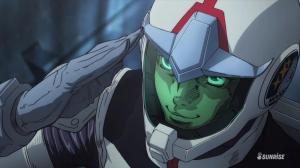
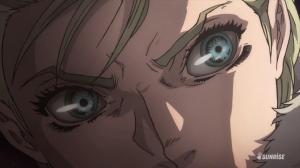
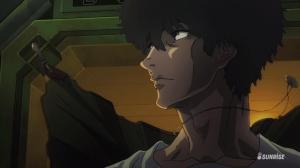
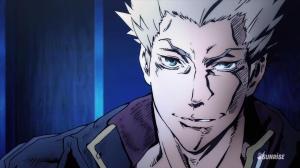
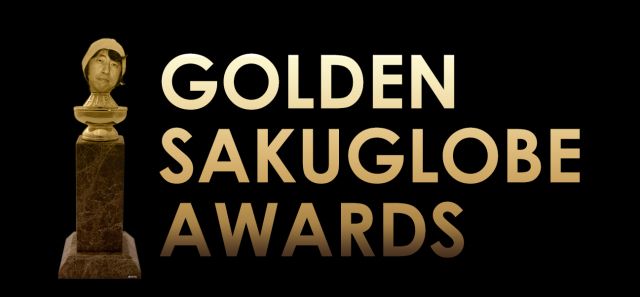
Lovely list. But I do have a tangential question: would it be seen as “cheating” or otherwise not entirely valid to highlight shows where only the BD/DVD version of an episode had improvements and fixes that might provide significantly better animation over the broadcast release? It seems that much of anime discussion is stuck in the “here and now” for that to be a consideration, but I’d like to hear what you guys think. You did briefly mention the BD for Yatterman Nights but I’m sure that is not the only possible example.
I think most sakuga fans know the hardships anime staff go through to get things looking good in time for airing and understand that sometimes waiting for the BD release will uncover some better animation, that is the case for Yatterman for sure. For example, last year it was Wizzard Barristers.
>bad BONES anime
Well fuck you too.
Wow between the obessive OPM wank to the lack of love for Kekkai Sensen and G-Reco this article was terrible.
The Kekkai ending got quite a few mentions and at the least I mentioned G-Reco in passing at the end…
Whatever….choices weren’t all that great.
Pingback: Sakugabowl 2015 | Sobre animadores y sakuga
Pingback: An Introduction to GEIDAI Animation | Wave Motion Cannon
Pingback: A Look at the Sakuga and Animation of 2016 – Sakuga Blog
Pingback: A Look at the Sakuga and Animation of 2017 – Sakuga Blog